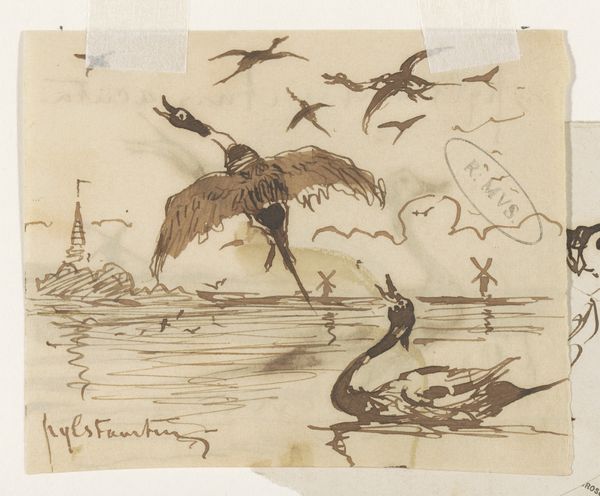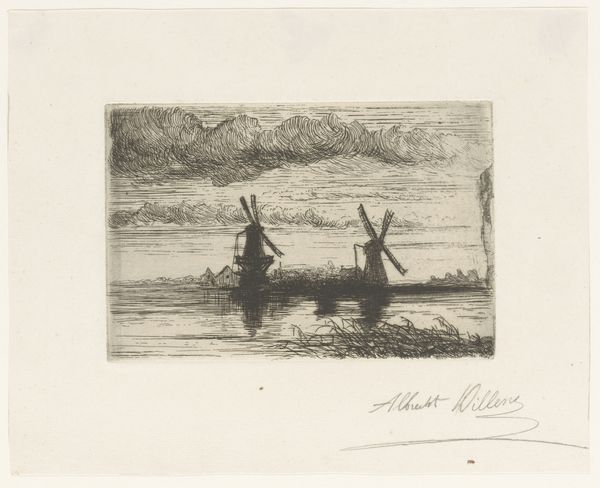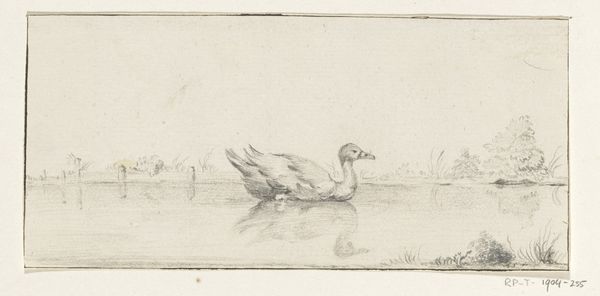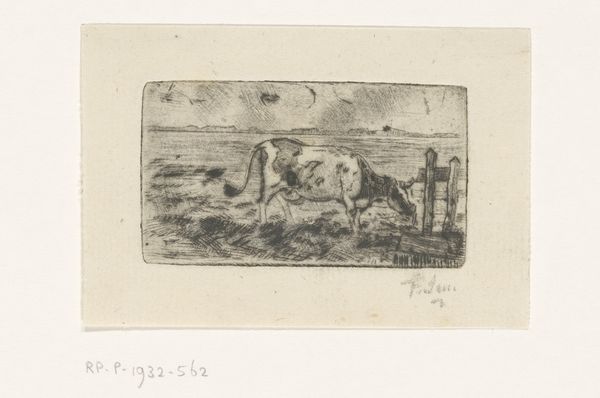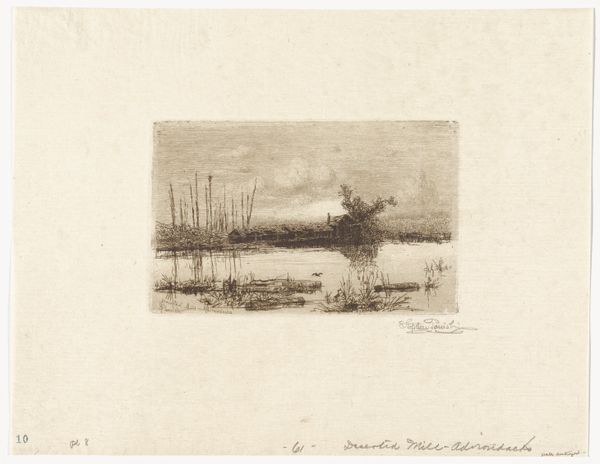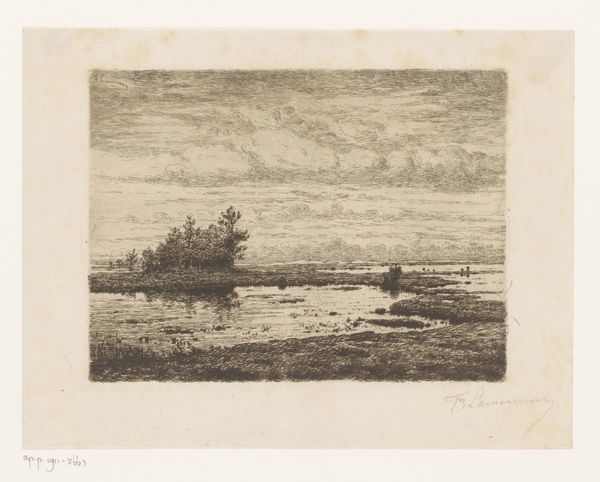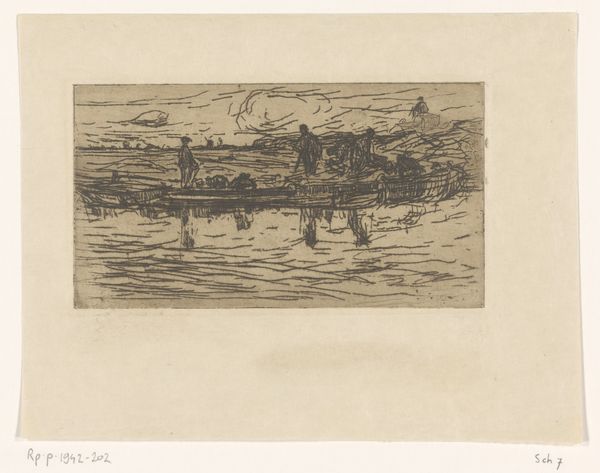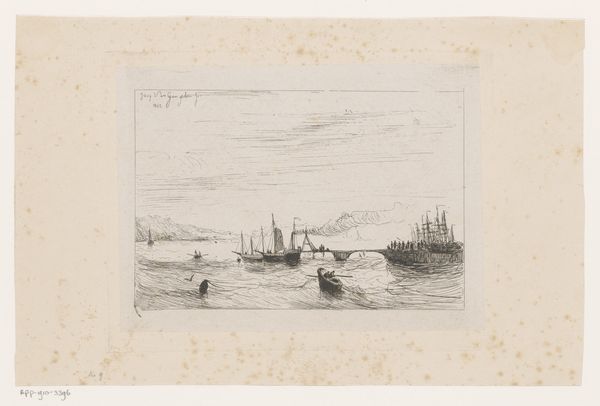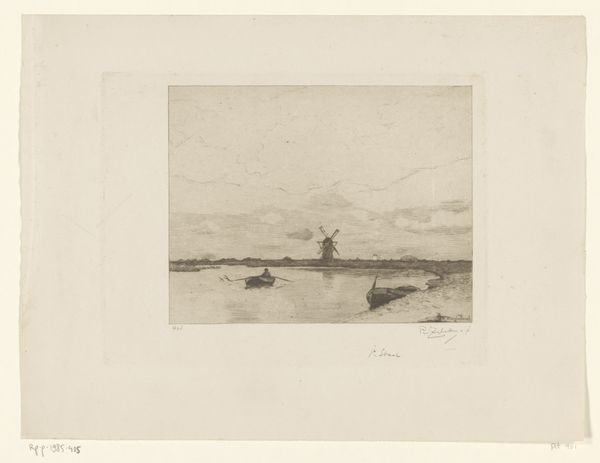
drawing, print, etching, paper, ink
#
drawing
# print
#
etching
#
landscape
#
figuration
#
paper
#
ink
#
realism
Dimensions: height 150 mm, width 217 mm
Copyright: Rijks Museum: Open Domain
Curator: Here we have "Swan in a Pond" by Omer Coppens. This etching, dating roughly between 1874 and 1909, uses ink on paper to capture a moment of quiet observation. Editor: It's stark, almost lonely. The limited palette amplifies the somber mood. Look at the rippled water and the reflections--it makes the image tremble. Curator: I think that comes from Coppens’ engagement with Realism, a directness in capturing what’s in front of him. Consider the labor involved. Each line meticulously etched into the plate, then transferred onto the paper, producing these delicate ripples. This process, demanding intense precision, democratizes image-making. Think of how this kind of etching made art accessible in ways paintings never could be! Editor: Yes, there’s definitely an intimacy borne of that precision. I feel myself drawn into the swan's introspective world. What’s he thinking, dipping his head that way? Is he thirsty, or just pondering the secrets of the pond? I find myself wondering if it’s about self-reflection or merely practicality of taking a long drink. Curator: Perhaps both, which speaks to the complexity of representation. He invites us to look closely at nature but it’s more than observation, it becomes a mirror reflecting our own thoughts and queries about life. Coppens makes me feel very serene even as I observe the simplest things, which leads back to materiality of these lines etched over metal! How did each curve or dot build this sense? Editor: Definitely! Those quiet etchings, carefully considered in this scene, make me wonder if he felt alone and isolated even surrounded as he must have been! And in some weird way, all of it, technique, landscape, mood adds together and pulls something from the hidden wells inside of ourselves… fascinating! Curator: Indeed. Looking at the interplay of craft and intention reveals so much, it makes me wish I understood etching as an art so that it made sense to a blind person by feeling it instead of viewing only what could be done visually. Editor: What a thought. We've touched upon materiality, emotion, and mirrored introspection.
Comments
No comments
Be the first to comment and join the conversation on the ultimate creative platform.


